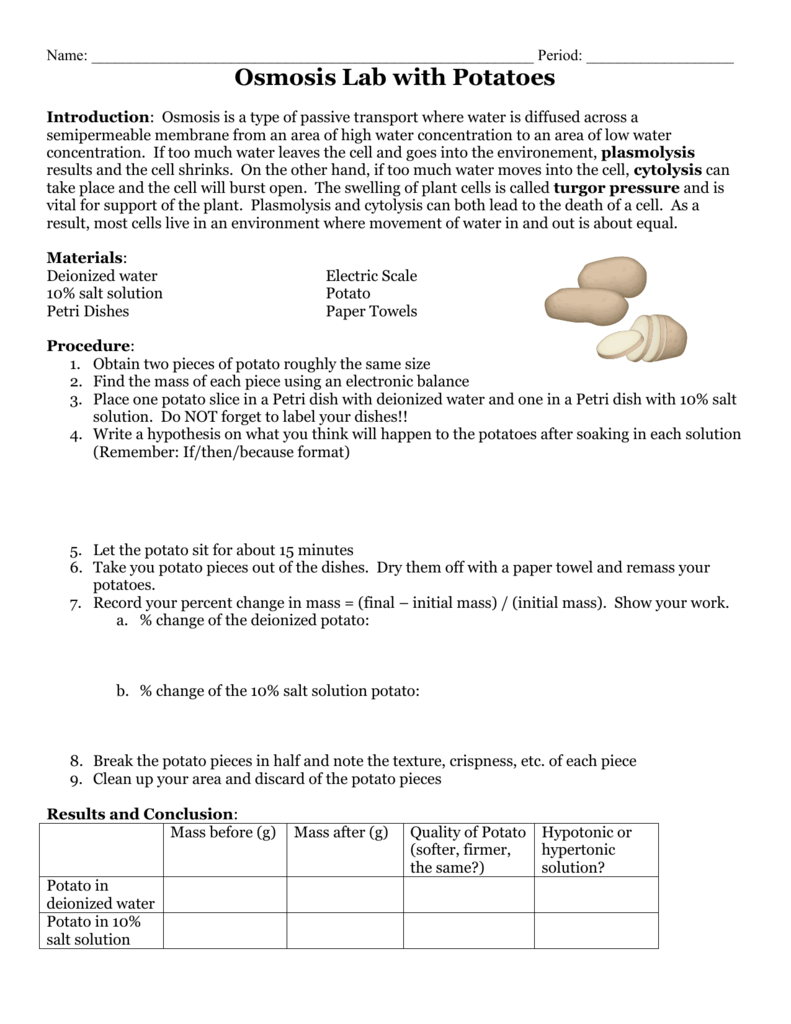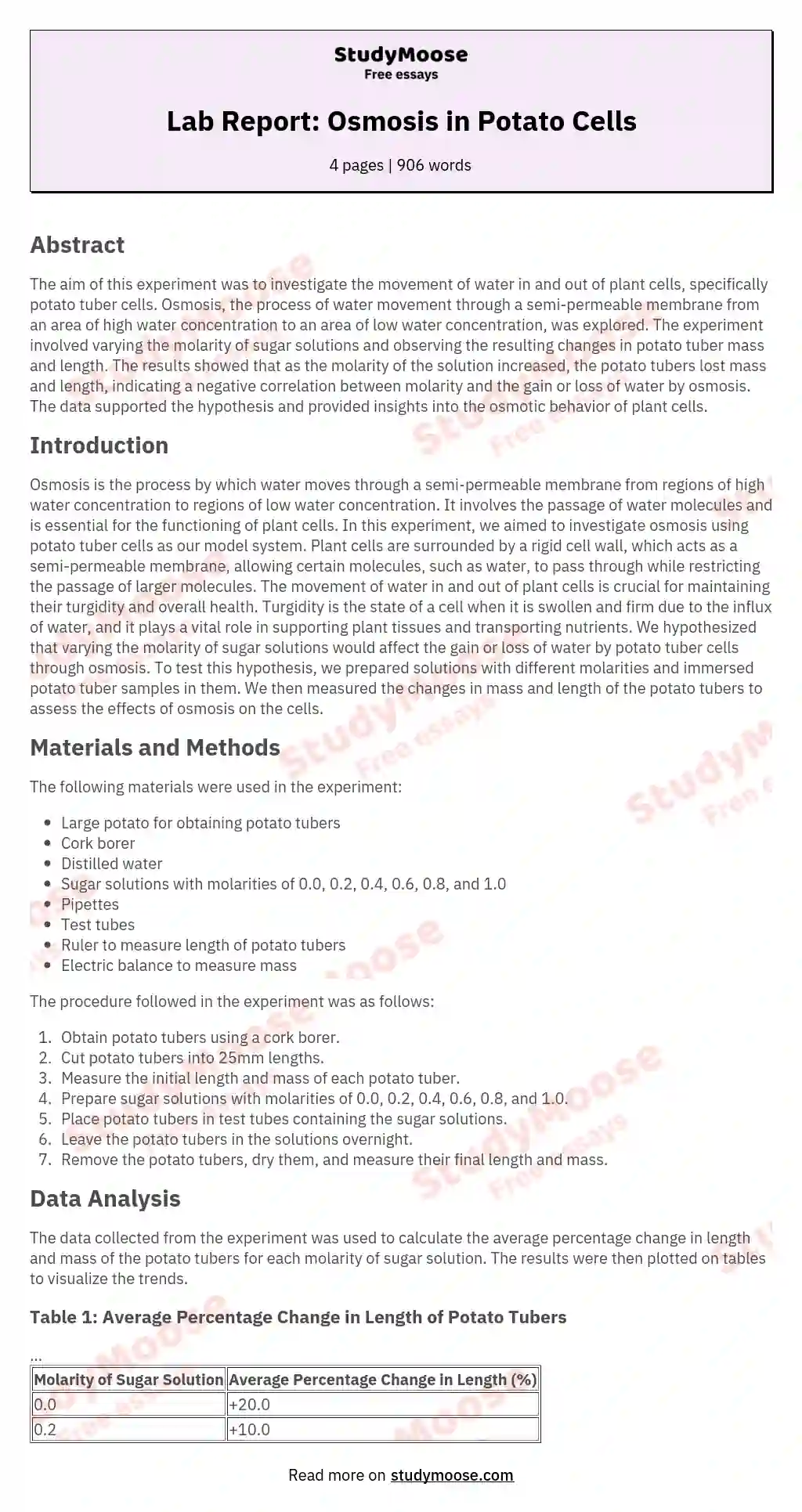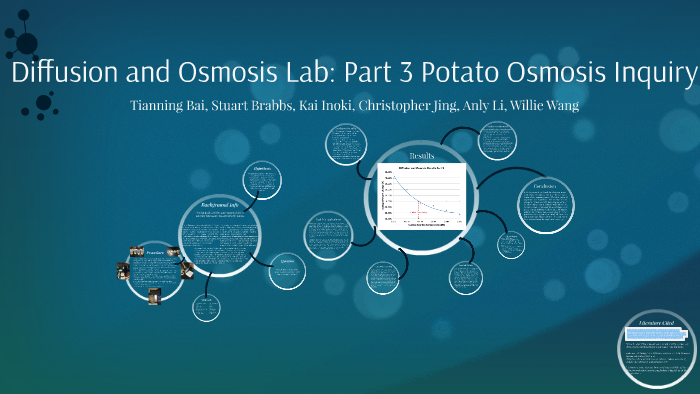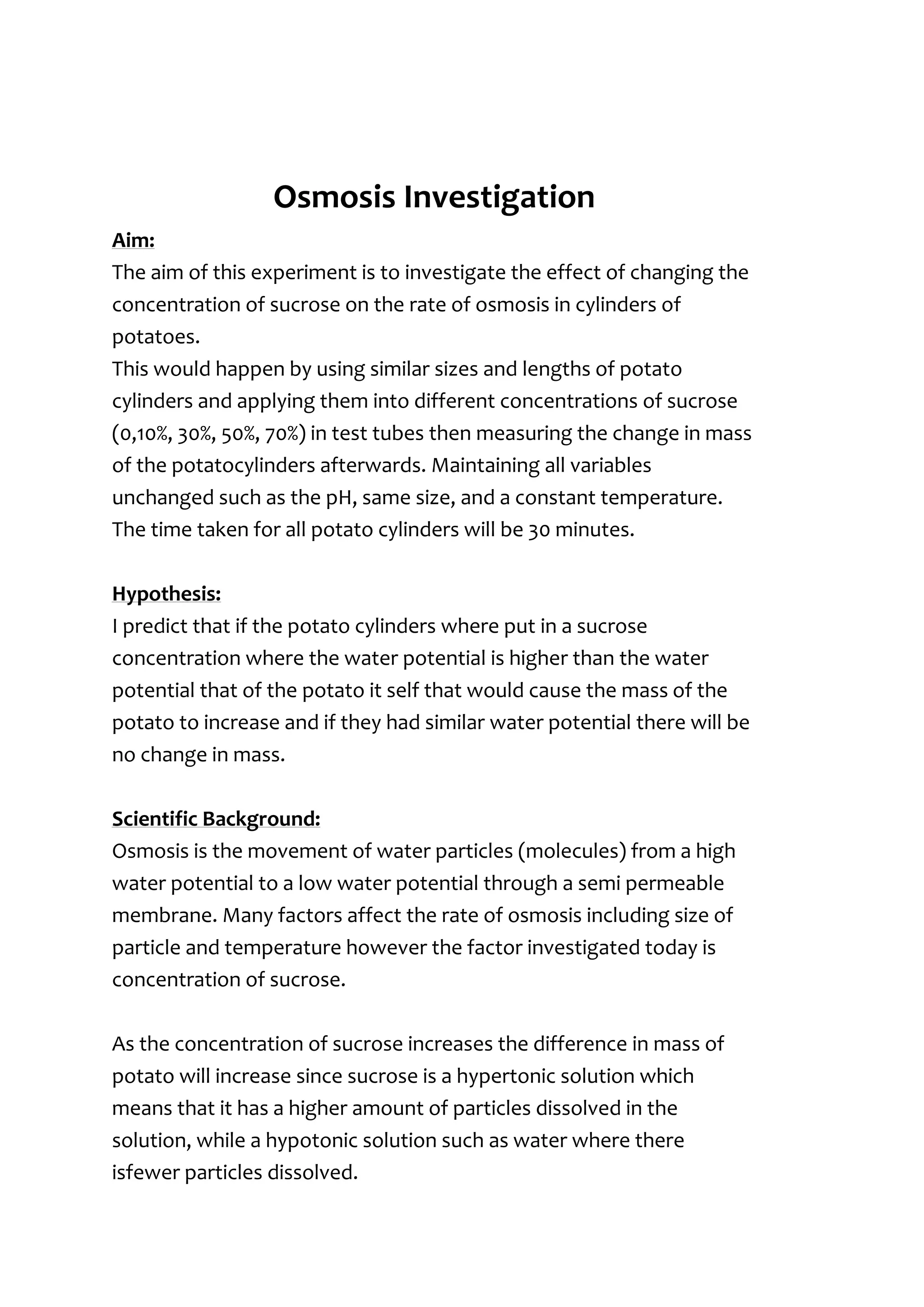Osmosis is the movement of water molecules from a region of high concentration to a region of low concentration through a semi-permeable membrane. In a potato osmosis experiment, the aim is to observe the effect of osmosis on potato cells by placing slices of potato in solutions with different concentrations of water molecules.
To perform the experiment, slices of potato are first cut and weighed to obtain the initial mass. They are then placed in beakers containing solutions with varying concentrations of water molecules. The solutions may range from pure water, which has a high concentration of water molecules, to a concentrated solution such as salt water, which has a low concentration of water molecules.
After a certain period of time, the potato slices are removed from the solutions and weighed again to determine the final mass. The difference in the initial and final masses is used to calculate the percentage change in mass.
The results of the potato osmosis experiment depend on the concentration of the solution. If the potato slices are placed in a solution with a high concentration of water molecules, such as pure water, the cells will absorb water by osmosis. As a result, the potato slices will gain mass and the percentage change in mass will be positive. On the other hand, if the potato slices are placed in a solution with a low concentration of water molecules, such as a concentrated salt solution, the cells will lose water by osmosis. As a result, the potato slices will lose mass and the percentage change in mass will be negative.
In conclusion, the potato osmosis experiment demonstrates the concept of osmosis and how it affects the movement of water molecules in potato cells. The results of the experiment can be used to understand the effects of osmosis on living cells and how they respond to different concentrations of water molecules.






